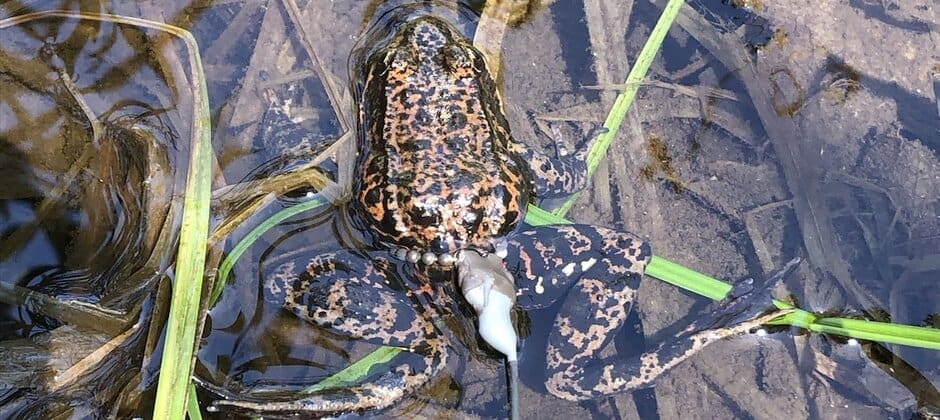Share this article
Immunizing frogs against fungus may not help them in the wild
Reintroducing captive-reared, federally threatened California red-legged frogs into the wild is one way researchers hope to augment the population, but researchers worried these reintroduced frogs may contract a deadly pathogen that’s increasingly affecting frog populations—the chytrid fungus.
Could vaccinating the frogs against Batrachochytrium dendrobatidis (Bd), the fungus that causes chytrid, help those reintroduced frogs out? In a study published in Ecosphere, researchers decided to test it out in the laboratory and in the wild.
The first step was finding out basic information about how California red-legged frogs (Rana draytonii) respond to the fungus in the first place.
“No experimental chytrid fungus infections have been done in the laboratory with this species before,” said Andrea Adams, an assistant researcher at the University of California, Santa Barbara. “So it has not been measured how infected these frogs can get under controlled conditions, or how they respond to infections.”
The research team collected frog eggs from the wild and took them to the San Francisco Zoo. After infecting the frogs with the chytrid fungus, the researchers monitored the infections, then successfully cleared the infections with an antifungal drug. The team re-infected some of frogs to find out whether frogs infected a second time had lower rates or intensities of the infection than frogs that had only been infected with the fungus once. They found that frogs infected a second time had lower Bd intensities than frogs infected only once.
But the team wanted to find out if this vaccination would hold up in the wild. After clearing all infections, the researchers let the frogs go into an area in Yosemite National Park where Bd was present. After tagging the frogs with small transmitters attached with beaded belts around their waists, they monitored any chytrid infections they picked up in the wild as well as their survival for three months. “Unexpectedly, we didn’t find any differences in infection between the treatment groups in the frogs that were released to the wild,” Adams said.
This suggests that vaccinations in captive California red-legged frogs that are being reintroduced may not be necessary, she said, although she suggests more studies be done to see if this pattern can be applied in other areas and source populations as well. “If it is, it means we can save a lot of conservation dollars on treatments and simply release frogs without the inoculations,” she said.
Adams stresses the importance of the unique partnerships with a zoo and a national park that made this research possible. “Zoos are playing an increasingly important role in conservation initiatives,” she said. “In this case, the zoo had the facilities and expertise needed to conduct the laboratory experiments,” she said. “They also raise frogs in captivity that aren’t part of the experiment to be released later.”
Header Image: Researchers followed previously captive California red-legged frogs that had been inoculated and then cleared of the chytrid fungus to see how they fared in the wild. Credit: Andrea Adams







